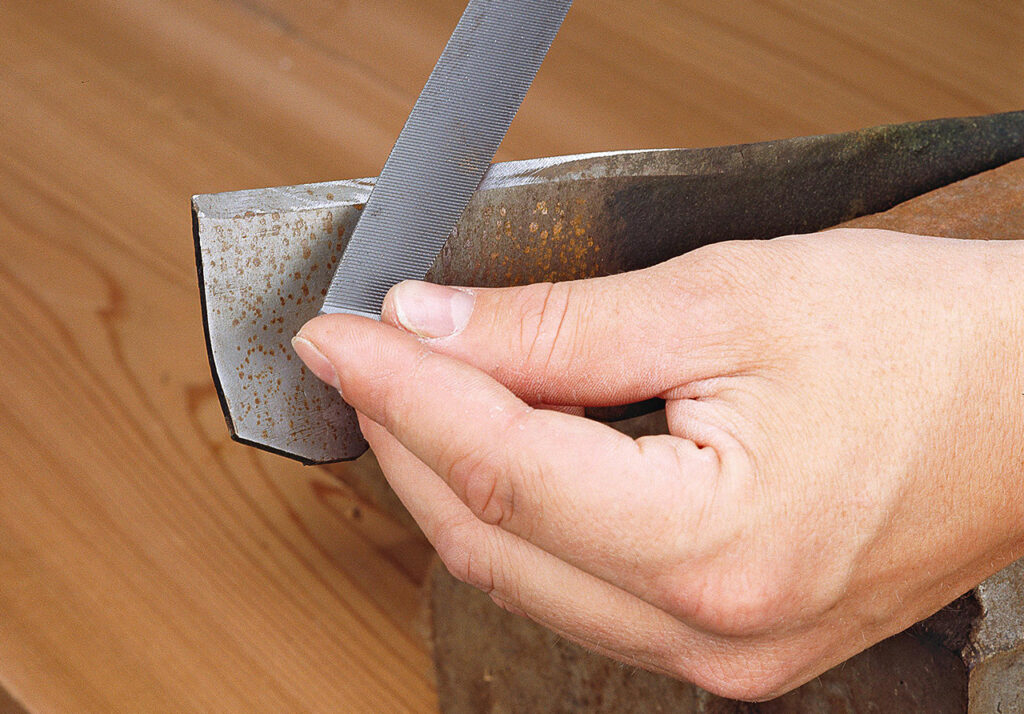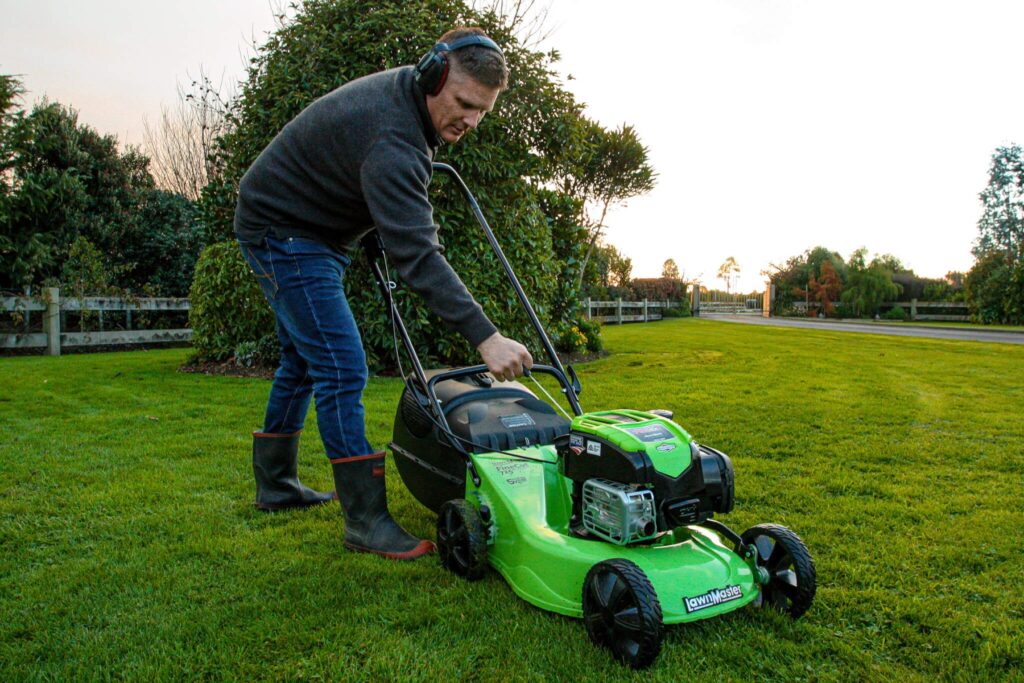Lawnmowers are a necessity, no matter where you live, to keep your grass from growing wild and unkempt. Of course, like most mechanical devices, a lawn mower needs to be maintained in order to keep it running smoothly. If you’re going to do this yourself, you need to know how the lawn mower run and what the parts do, especially the carburetor.
Of course, the first question you’ll need to ask yourself is, where is the carburetor on a lawn mower? The location of this part can vary, depending on which brand of lawn mower you’ve purchased. Knowing what it looks like is the first step, so that you can find this piece, no matter where it’s placed. Then you can clean and maintain it whenever needed for a mower that runs perfectly every time you start it. The following instructions can help you with this process.
Before you can start taking care of the carburetor, including cleaning and maintaining it, you first need to know how to locate it among the other engine parts. It isn’t as difficult to find as you may think, partly because a mower engine is so small and partly because this piece has a distinctive look. It is also positioned among the other engine parts in a very specific way. Let’s take a look at the lawn mower carburetor construction.
Carburetors aren’t hard to find if you know what to look for. These pieces are rectangular pieces of metal, usually with some black areas that make them stand out among the other engine parts. These black areas may be shaped like a circle and possibly some trim on the sides. They also have some springs and levers attached and a distinctive bowl shape on the bottom.
As part of the lawn mower’s engine, the carburetor will be attached to some of the other parts in a specific way to keep the engine running properly. The carburetor Trusted Source What is Carburetor?- Definition, Types & How it works - Engineering Choice The carburetor is called the ‘Heart’ of the automobile, and it cannot be expected that the engine will act right, give the proper horse-power, or run smoothly if its ‘heart’ is not performing its functions properly. www.engineeringchoice.com supplies the perfect amount of air to the fuel to ensure that it burns properly to keep the engine running. They work the same way whether you’re using the best lawn mower for a small yard or a large ride-on mower.
The carburetor is usually bolted to the engine on either the side or the top, usually behind or below the air filter, with a connection to the gas tank. The air filter housing is usually easy to identify and access so you don’t need to struggle when changing the air filter during your routine maintenance. If you can find this piece, just look next to it and you’ll be able to locate the carburetor.
Though you may know what parts to look for when trying to find the carburetor, different manufacturers and lawn mower types don’t have the engine laid out all the same. That’s why it’s important to know where to locate the carburetor with specific types of lawn mowers since this will make it much easier to find this piece. The two main types of lawn mowers are the riding mowers and the walk-behind lawn mowers.
When it comes to riding lawn mowers, there are three main types to choose from. The rear engine models are the smallest options. The lawn tractors are best for larger yards, due to the powerful engines. There are also zero turn radius mowers that are the easiest to maneuver, plus they also have a powerful motor.
Regardless of which option you choose, the carburetor location will likely be in the same area. This is usually on one side of the mower’s engine, below or behind the air filter. This means that you’ll have to remove the air filter and its housing in order to access the carburetor. Once the housing and filter are out of the way, you just need to follow the fuel line from the gas tank to locate the carburetor.
Like with riding lawn mowers, there are a few options available when it comes to walk-behind lawn mowers. The first is the electric mower, which is a corded model and is perfect for smaller lawns. The Honda 664100 GCV200 Versamow is a great choice, featuring 7 mowing heights and 9-inch wheels designed for all types of terrain.
The best self-propelled lawn mowers move on their own while you guide them, so you have to do less of the work. They also come in both front-wheel and rear-wheel drives, depending on how level or hilly your yard is. There are also two-function mowers that mulch and bag the grass as it cuts and three-function mowers that also add side discharges to the other functions.
To find the carburetor in a walk-behind lawn mower, the best place to look is on the side above the base of the mower.
As we discussed above, lawn mower carburetors may not always be located in the same place for every machine. That’s why it’s important to consider which brand you’re buying in order to find the carb when it needs some maintenance.
Husqvarna has several types of lawn mowers for sale, from walk-behind mowers to ride-ons. This brand even has robotic models available, like the Husqvarna Automower 415X, which is reliable and offers great performance, even on slopes or through narrow passages.
If you have a Husqvarna lawn mower that’s not running as it’s supposed to, it could be due to a dirty or clogged carb. Of course, to clean the carburetor on one of these models, you first need to learn how to find it. It isn’t an easy process to locate it, though, since you do need to disassemble some of the engine in order to access it.
First, locate the air filter near the fuel tank on the outside of the mower. Remove the screws holding the air filter in place and lift out the entire air filter assembly. When this is out of the way, the carb will be revealed. Be sure to check the owner’s manual to be sure that you’re doing this all correctly.
Honda has a variety of lawn mowers for sale, though they aren’t all designed with the same engine, even though the parts that run the engine are all the same. The best way to locate the carburetor on any Honda lawn mower is to check the user manual that comes with it. If you know what you’re looking for, you can also locate it by removing the engine cover. Then you should locate the air filter, which is right next to the carburetor. Once you’ve located this piece, you can remove it and clean or maintain it as needed.
Briggs & Stratton carburetors aren’t any more difficult to find than some of the other lawn mowers on the market, even if they aren’t positioned in the same spot. To find one in this brand’s engine, first, find the air filters and casing, which is usually on the top of the riding mower engine or the side of the smaller walk-behind models. Remove the air filter casing and you should see the carb right next to this area.
Whether you’re using the best lawn mower for hills or one for evenly leveled yards, you can likely find the carburetor pretty quickly if you know where to look. If you’ve never tried to find the carburetor located on a lawn mower, the following instructions can help you do so in most cases.
If you’re just trying to find the carburetor, you likely won’t need any tools unless you have to remove the air filter casing. If this is the case, you may need a screwdriver, though you shouldn’t need anything else just to locate the carb.
Trying to work on your lawn mower engine on uneven ground or somewhere you’re not getting enough light can make this job much more difficult. That’s why choosing the right spot to park your mower is the first step to finding the carb. You want to make sure the ground is as level as possible to keep the mower from wobbling or rolling as you try to work on it. You should also make sure that you have enough light to see, either using direct sunlight or bright lights in your garage or workshop.
In most cases, you’ll notice that the engine isn’t running well or at all when you start it up, which leads you to the assumption that there is an issue with the carburetor. If the engine is still running, turn it off before going any further with the engine work. You should let it cool down as well before you begin to prevent any burns or injuries when you do get down to business.
Setting the parking brake is also a must since a lawn mower can still roll on an even surface if bumped or leaned upon. The parking brake will prevent this, keeping the mower in place as you continue these steps.
Though not all lawn mowers will include a hood, many of them do. The hood is designed to offer some protection for the engine, keeping dirt, debris, and moisture from getting in there. Those with a hooded lawn mower need to remove the hood in order to access the engine.
This is easy to do since there will likely only be a couple of hood latches holding it in place. When you have these open, you can either raise or remove the hood, depending on which type you have. If yours is one of the ones that doesn’t have one of these hoods, then you can skip this step in the carb location procedure since you’ll already have full access to the mower’s engine.
The air filter Trusted Source Air contaminant exposures during the operation of lawn and garden equipment The US Environmental Protection Agency (EPA) initiated the Small Engine Exposure Study (SEES) to evaluate potential exposures among users of small, gasoline-powered, non-road spark-ignition (SI) lawn and garden engines. www.nature.com on a lawn mower is designed to keep dust, dirt, and other debris from entering the engine, particularly the carburetor. These need to be changed every three months or so to ensure they are doing their job, otherwise, the carb could get clogged, which prevents it from working properly and keeping the engine from starting.
Since the air intake and filter are right next to the carburetor and occasionally block it from view, you need to find these pieces first in order to locate the carb. To do this, find the air filter housing, which is usually round or square in shape with slits or holes on top. This piece is located at the top or side of the engine. This housing, which contains the paper or foam air filter, is secured to the carburetor using latches or screws, so once you find the housing, the carb should be easy to locate.
Once you’ve located the air filter and intake, you can move on to the fuel line, which comes out of the gas tank. The tank is usually black and likely mounted somewhere in the engine that allows for easy access when adding fuel to the lawn mower.
Once you have located the mower’s gas tank, it should be easy to find the fuel line. It is usually placed near the bottom of the gas tank, with a small clamp securing it in place. After you find the fuel line, you can trace it from the gas tank to the carburetor.
There are actually a few reasons why you may need to locate the carburetor on your lawn mower. If this piece is dirty or damaged, your mower won’t run properly and you may not even be able to get it started at all. Let’s take a look at all of the possible reasons that you may need to find your mower’s carb and how to go about fixing any issue you’re having.
If your carburetor is dirty or in need of repair or replacement, the first thing you need to do is take it out of the engine. This isn’t a difficult task, though it is essential to have the right tools for the job. You should also read the owner’s manual to be sure you’re following the proper procedure.
Taking pictures of the engine as you go will also help you replace the parts you’ve removed when it’s time to put it back together again.
Though professionals may be able to clean a mower’s carb without removing it from the engine, you shouldn’t attempt this. It is much easier to take it out first. To begin, turn off the engine, let it cool, and then remove the mower’s hood if it comes with one.
Next, remove the air filter housing, the air filter cover, and the air filter from the engine. There may be latches holding some of these pieces in place, though some models require the use of a screwdriver to get them off. Turn off the fuel valve if possible, otherwise, make a crimp in it to prevent gas from flowing through it and spilling out. Clean any gas leaks with a rag immediately.
Find the linkages for the choke and throttle and remove them from the carb’s throttle lever, then slide the carburetor free of the mounting bolts. You may also need to unthread the screw of the carburetor bowl to release this piece. Remove the float pin from the float and needle and lift the carb free.
If the carburetor is full of dirt and dust, you’ll need to clean it in order to get it working properly again. This will require taking the carb apart after you’ve removed it from the engine. Start by releasing the screws securing the primer bulb and base. Then remove the metering plate, diaphragms, and gaskets. When this is done, the carb’s intake and outlet ports should be visible.
To clean the carb, use a dedicated carburetor cleaning spray if you have one. You can also use WD-40 if necessary. Spray this into the ports to clear out any residue that has collected. You can also use the spray to clean out the bowl if one is included. Once you have the carb clean, check for any signs of rust, using sandpaper to rub this off if any is found.
When the carb is clean and free of rust, allow it to dry completely. Then put it back together, ensuring that all of the pieces are going back into the exact spot that they came from, including the gaskets, diaphragms, metering plate, and primer base. The float and needle, as well as the bowl, should also be reinstalled correctly to prevent future carburetor issues.
Then slide the carburetor back onto its mounting bolts and reattach the throttle lever and fuel line. Replace the air filter, cover, and housing, and put the hood back on the engine. Your lawn mower should now be ready to go.
To keep the carburetor working as it is supposed to, you should also remember to clean it every year. The more often you do so, the less chance it will wear out and require repairs or replacement.
Sometimes cleaning your lawn mower’s carburetor doesn’t get it running well, which could mean that this piece needs to be repaired. This isn’t an impossible task as long as you have some skill in this area. A carburetor kit may also be required, providing you with some of the major carb parts that may need to be swapped out. These can include the float, float needles, gaskets, and diaphragms. Kits aren’t overly expensive, either, so you can likely get one for $20 or less if needed. Be sure to check the kit carefully before you buy it to make sure it will fit the carburetor that you have in your lawn mower since these aren’t always interchangeable.
If you’ve already tried cleaning and repairing your carburetor and the engine still isn’t working properly, you may need to replace the entire carb to get it up and running again. If you can repair a carb using a carburetor kit, you should also be capable of replacing the entire piece with a brand new one if needed. These are over double the cost of the kits in most cases, though this is still cheaper than getting a brand new mower.
If you’re unsure whether you’ll be able to do the job properly, you can also take your lawn mower to a repair shop and have them do it for you. This does cost more than replacing the carb yourself, though it isn’t as expensive as you may think. It also saves you the trouble of doing it yourself, especially if you aren’t comfortable working on engines.
The carburetor is one of the most important parts of a lawn mower since it ensures that the proper mixture of air and fuel is created to start the engine and keep it running. Unfortunately, these pieces need to be maintained now and then to prevent dirt and dust build-up from causing issues with this engine part.
Though not every mower has the same carburetor or locates them in the same place, they are relatively easy to find using the steps that we’ve described above. Those steps will keep you from asking “where is the carburetor on a lawn mower” ever again since you’ll always know how to find it whenever you need to.





